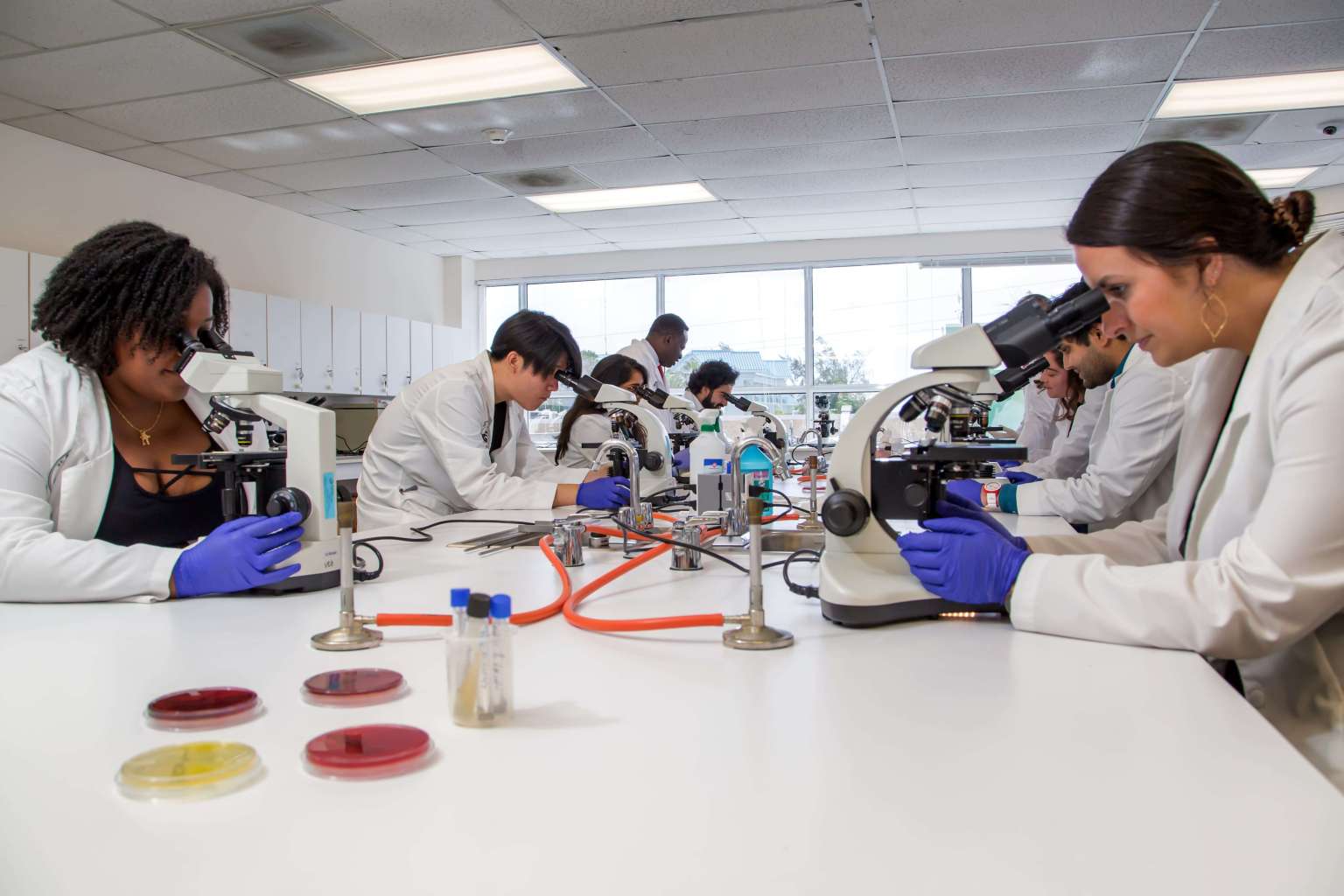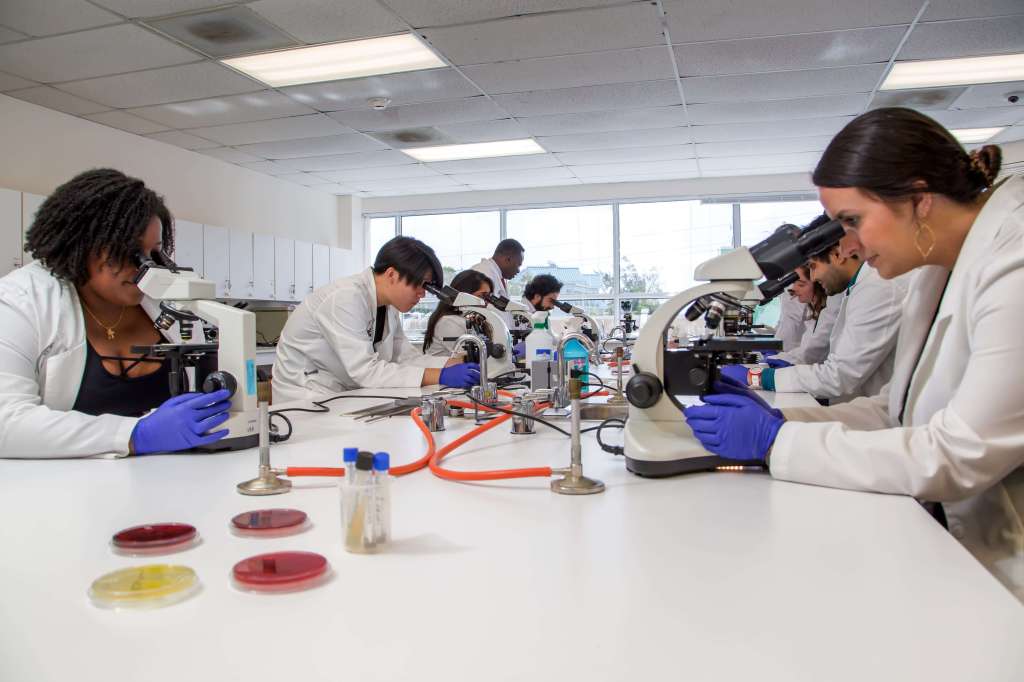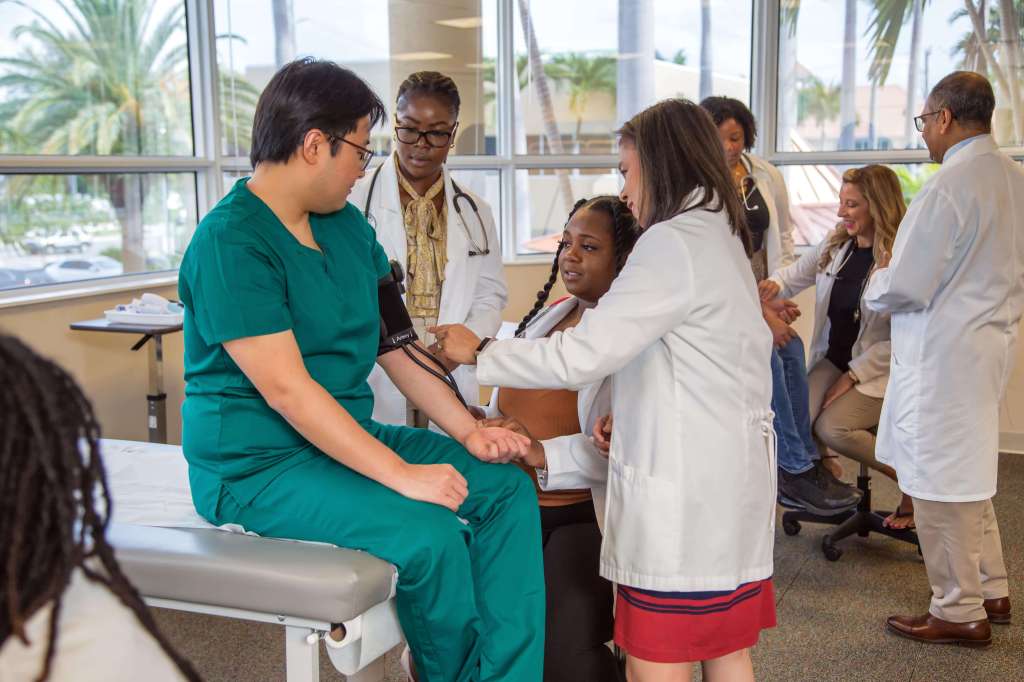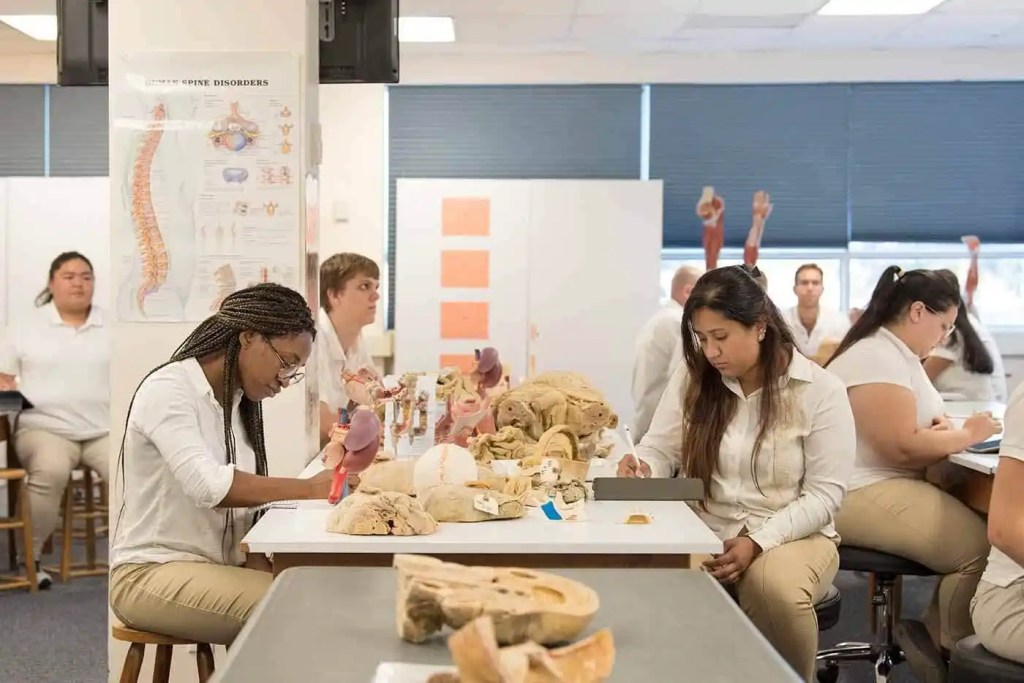
How Medical Students Can Balance Life and Studies During an MD Program
Learn what you need to successfully navigate the personal and academic challenges of medical school.
Balancing life while navigating the rigors of an MD program is a challenge that every medical student faces. The demands of medical school can make it feel like there’s little room for anything outside of coursework, clinical rotations and study schedules. For students aspiring to build a career in medicine, learning how to manage these competing priorities is essential — not just for succeeding in your studies but for maintaining your overall well-being and cultivating skills that will contribute to the work-life balance of a doctor.
In this guide, we’ll explore essential work-life balance tips, providing tools and strategies to help medical students thrive both inside and outside of the classroom.
Understanding the Importance of Work-Life Balance for Medical Students
Achieving balance as a medical student isn’t just beneficial — it’s necessary for long-term well-being and success. Let’s take a look at what exactly “work-life balance” means and some of the specific challenges for medical students.
What is work-life balance?
Work-life balance is the art of maintaining a healthy separation and integration between work responsibilities and personal life. For medical students, this concept means finding ways to excel academically without sacrificing physical health, mental wellness and personal relationships.
Medical school presents unique challenges compared to other graduate programs, as students are not only absorbing vast amounts of information but also learning hands-on patient care, which can be emotionally taxing. In a profession that inherently demands time, energy and personal investment, learning to maintain balance during medical school is key to fostering resilience and laying the groundwork for a sustainable career.
Challenges medical students face during an MD program
Medical school presents unique challenges, and the intense workload often leaves little time for personal activities. The first year, in particular, can be demanding, as students adjust to a rigorous schedule filled with lectures, labs and studying. Students need to take care to avoid the effects of burnout, which can result from neglecting self-care in the pursuit of academic excellence.
Avoiding common pitfalls in the early stages, such as overcommitting to extracurriculars, can help set a positive foundation for the remainder of the program. Here are some common mistakes medical students should avoid.
Time Management Techniques for MD Students
Mastering time management is one of the most valuable skills a medical student can develop. Developing effective time management strategies can make medical school a much less overwhelming experience.
Prioritizing tasks
Prioritization involves identifying the most crucial tasks and focusing on them first. Techniques such as the Eisenhower Matrix — classifying tasks as urgent/important, important/not urgent, urgent/not important and neither — can help organize your workload. By completing the most pressing tasks first, it’s possible to avoid the stress of last-minute cramming. Using a daily or weekly planner can help to allocate appropriate time for classes, study and breaks, making it an effective form of time management for students, which helps you stay focused on what truly matters.
Creating an effective study schedule for an MD program
Establishing a structured study routine is key. To begin, create a weekly schedule that designates specific time slots for each course or subject. Consider implementing a study technique such as the Pomodoro Method, where focused study periods are followed by brief breaks. Make sure to schedule time for relaxation too — consider dedicating weekends to lighter study and family time to ensure mental refreshment. Regularly evaluating and adjusting your study schedule will ensure it remains effective and adaptable to your needs.



Stress Management Strategies
Medical school can be stressful, so it’s important to build strategies for managing stress effectively. These strategies will serve you well, not only throughout your education, but also in your future career.
Managing stress during an MD program
The pressures of medical school can lead to chronic stress, impacting sleep, concentration and emotional well-being. Identify stress triggers — be it an overwhelming course load or a high-stakes exam. Set realistic goals and break down large tasks into manageable steps to avoid burnout.
Another common cause of stress is the expectation to perform at a high level consistently. Techniques such as setting realistic goals, allowing yourself to make mistakes and reaching out for support can alleviate pressure. Engaging in hobbies or activities unrelated to medicine can also help you recharge and prevent burnout.
Mindfulness and relaxation techniques for medical students
Practicing mindfulness, whether through meditation, breathing exercises or even mindful walking, is an effective way to manage stress. Developing mindfulness habits can enhance focus, lower anxiety and provide a mental break from academic demands. Apps like Headspace or Calm can be a valuable resource for building daily relaxation routines.
Building a Support Network
Having a network of supportive people is invaluable during medical school, providing both academic assistance and emotional support.
How medical students can seek help from mentors and peers
A good support network starts with finding mentors who understand the challenges of medical school. Mentors can offer guidance on balancing study, life and career goals, as well as share insight on what comes after medical school. Additionally, peer connections — friends in the same program or study groups — are beneficial for both academic collaboration and social engagement. Reach out to older students or faculty members, as they often have insights that can make your journey smoother.
At St. Matthew’s University School of Medicine, our faculty and administrative team is committed to supporting both your academic and personal needs. Faculty regularly offer office hours and are often open to scheduling more meetings to support your learning efforts. Our school also offers a variety of Student Support Services to help you however you may need.
Nutrition and Health: Taking Care of Your Body
Physical well-being is directly linked to both academic performance and overall happiness. Proper nutrition and physical activity help fuel focus and resilience, giving you the energy you need to succeed in your studies and the positive headspace to enjoy the other aspects of your life.
Healthy eating habits
Medical students are often pressed for time, which can lead to poor eating habits. Preparing healthy meals ahead of time can keep energy levels stable and support mental focus. Eating nutrient-rich foods, such as fruits, vegetables, lean proteins and whole grains, provides the energy required for long study hours. Keep healthy snacks on hand, stay hydrated and try to limit caffeine and sugar intake.
Incorporating physical activity
Incorporating exercise into daily life doesn’t have to be a chore — it can be as simple as taking a walk during study breaks or doing quick at-home workouts. Physical activity reduces stress, improves concentration and is essential for both physical and mental health. Exercising regularly through healthy habits for students like a quick gym workout, a jog or a yoga session can significantly impact mood and energy levels. Exercise doesn’t have to be long to be effective — even 20 minutes can make a difference.
Setting Boundaries During an MD Program
Learning to set boundaries is essential to maintaining focus on your studies without sacrificing your personal life.
Balancing clinical rotations and personal life for MD students
During clinical rotations, medical students get hands-on experience with real patients, often requiring long hours and weekend shifts. This is a great opportunity to face real-world responsibilities that demand professionalism and dedication. However, setting boundaries is essential to prevent burnout. Prioritizing time off, limiting study time after clinical shifts and communicating clearly with loved ones about your schedule can prevent fatigue and allow you to keep up your personal activities.
Long-Term Strategies for Medical Students to Sustain Balance
Balance isn’t just a short-term goal – it’s about establishing habits that will help sustain you throughout your medical career. Developing these strategies and putting them into practice early sets you up to navigate the challenges of being a doctor.
Setting realistic goals during an MD program
It’s easy to feel overwhelmed in medical school. That’s why setting realistic, achievable goals is essential. Break down your long-term ambitions into smaller, manageable goals and adjust these as you progress. Regularly checking in on your goals will keep you motivated and remind you of what you’ve already achieved. Remember, maintaining a healthy balance now sets a foundation for achieving the work-life balance of a doctor.
Conclusion
Balancing life and studies in an MD program is possible with the right tools and support. By prioritizing time management, building a support network and focusing on wellness, you can navigate the demands of medical school with resilience. Choosing the right school can also make a significant difference, and for many students, Caribbean medical schools offer a unique combination of rigorous academics, extensive support systems and opportunities to unwind in a beautiful setting.
At St. Matthew’s University School of Medicine (SMUSOM), we offer a supportive MD program that prepares students to achieve success in required examinations (like the USMLE), secure residency placements for after graduation and go on to practice in the U.S. and Canada.
Want to know more about how we help our students overcome the challenges of medical school? Check out this video testimonial:
Apply today or contact us with any questions.
FAQs About Medical Student Life
The time a medical student spends studying and working depends on individual needs but, on average, students in Basic Science dedicate about 40–60 hours per week to lectures, labs and independent study. Some students may work additional hours, especially during exams or intensive study periods. Balancing this workload requires effective time management for students, helping to prevent burnout and maintain focus.
Most medical students do not work traditional part-time jobs due to the intense demands of their program. The high workload makes it challenging to hold down a job, though some students find ways to manage limited side work, such as tutoring or remote freelance work, particularly in the early years of their studies. Many students wonder, “can you work while in medical school?” and while it’s possible, students should evaluate their workload and personal limits to decide if it’s feasible without compromising their studies.
Yes, medical school students can absolutely have fun! While the life of a medical student is demanding, making time for relaxation, hobbies and social activities is essential for maintaining mental health. Medical students who successfully balance work and personal life will often experience lower stress levels and feel more refreshed, which positively impacts their academic performance.
During the first two years of medical school, called Basic Science, SMUSOM students will attend lectures and labs five days a week. Then, during Clinical Medicine (semesters 6-10), their schedule will shift to follow the hours of medical professionals, which can include weekends or nights. Consistency is key and having a set schedule helps students create a study routine and establish time for rest.
Get in touch for more information